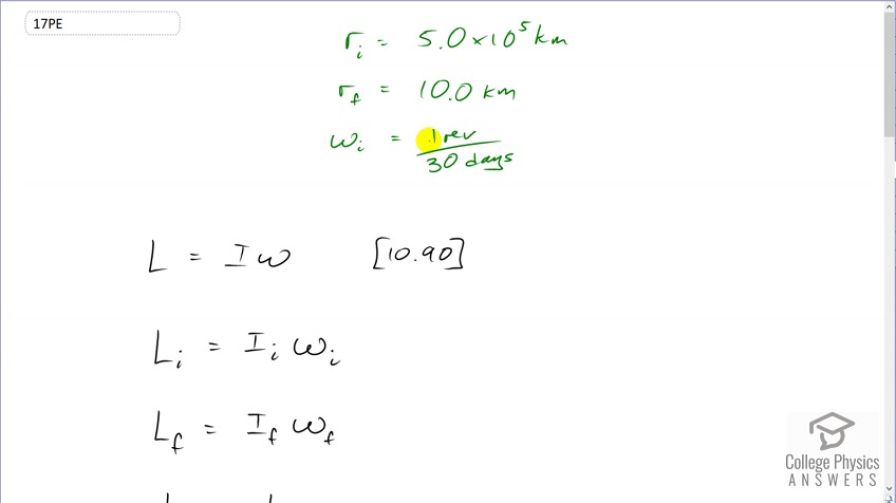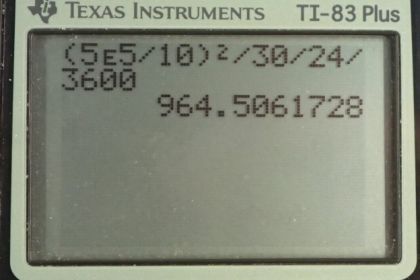Question
The core of a star collapses during a supernova, forming a neutron star. Angular momentum of the core is conserved, and so the neutron star spins rapidly. If the initial core radius is and it collapses to 10.0 km, find the neutron star's angular velocity in revolutions per second, given the core's angular velocity was originally 1 revolution per 30.0 days.
Final Answer
Solution video
OpenStax College Physics for AP® Courses, Chapter 34, Problem 17 (Problems & Exercises)

vote with a rating of
votes with an average rating of
.
Calculator Screenshots
Video Transcript
This is College Physics Answers with Shaun Dychko. A star explodes in a supernova and becomes a neutron star; it has an initial angular velocity of one revolution every thirty days and an initial radius of 5.0 times 10 to the 5 kilometers and once it becomes a neutron star, it has a final radius of 10.0 kilometers. Now the angular momentum of the star is conserved and the question is what will the angular velocity be after it becomes this tiny neutron star? So from chapter 10, equation 90, we know that angular momentum is moment of inertia multiplied by angular velocity and so we have an initial moment of inertia equaling the initial sorry the initial angular momentum is the initial moment of inertia times the initial angular velocity and the final angular momentum is the final moment of inertia times the final angular velocity. And these are the same; the momentum is conserved which is to say that the final angular momentum equals the initial angular momentum. Now in figure [10.12], we have the moment of inertia formula for a sphere which is 2 times the sphere mass times its radius squared divided by 5. So we have a final moment of inertia and an initial moment of inertia and I did not put a subscript on the M because the mass doesn't really change; I mean I guess in a supernova, some of the mass is shot away but we are gonna assume that's negligible and the mass essentially is the same but the radius is very different. So we substitute this in for the moment of inertia's in this formula here and the 2, the 5 and the M cancels on both sides and we can divide both sides by the final radius squared and we get that the final angular velocity is the ratio of the initial to the final radii squared times the initial angular velocity. So that is 5 times 10 to the 5 kilometers— initial radius for the star— divided by 10 kilometers—for the final radius when it becomes a neutron star— and you square that and then multiply it by the initial angular velocity which is one revolution for every thirty days and because I can tell that this number is going to be very big, we are gonna convert the units here into seconds instead of days. So we have one day for every 24 hours and then one hour for every 3600 seconds and we are left with revolutions per second and that is 960 revolutions every second will be the final angular velocity.
